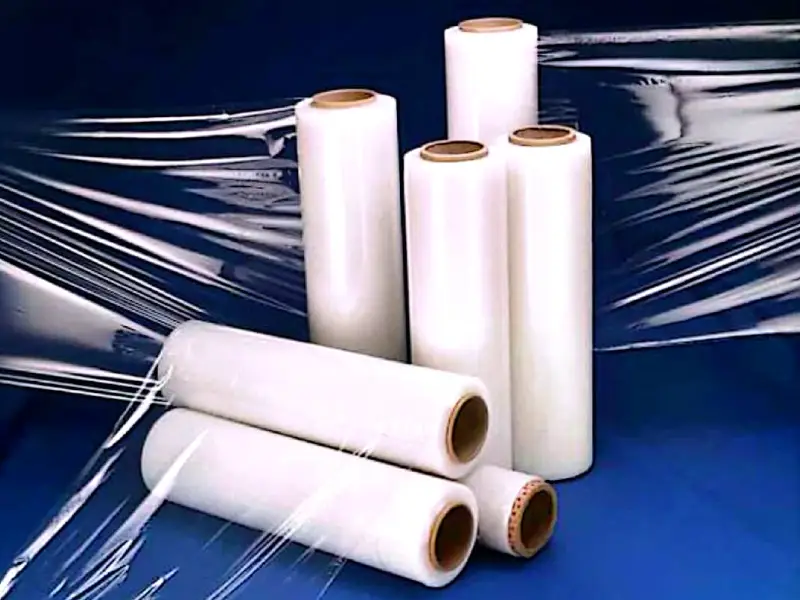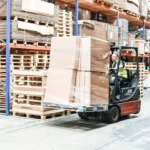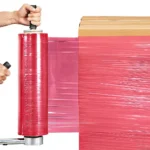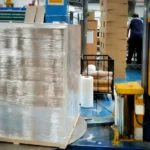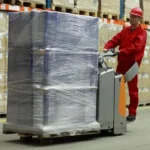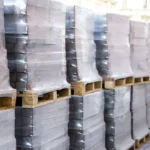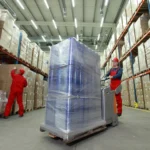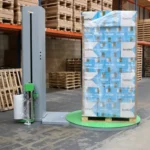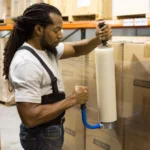The packaging industry is a cornerstone of product production and distribution. It acts as a bridge between consumers and manufacturers, ensuring that goods are presented in the best possible way. Beyond protecting and preserving products, packaging plays a significant role in attracting customers and boosting sales.
One of the most popular and practical materials in this field is stretch film. Thanks to its unique properties, stretch film has earned a special place in the industry. In this article, we will delve into what stretch film is and explore its applications and benefits.
What is Stretch Film?
Stretch film is a thin and flexible plastic material widely used for packaging due to its elasticity and high adhesion properties. Typically made from high-quality polyester, this versatile material is used across various industries because of its unique features.
Applications of Stretch Film
Stretch film holds a vital place in the packaging industry as an innovative polymer product. Its characteristics—such as high adhesion, stretchability, transparency, and resistance to environmental damage—make it suitable for a wide range of applications, detailed below:
Industrial and Construction Packaging
Industrial Equipment: Stretch film protects machinery, metal parts, and other industrial equipment during storage and transit.
Petrochemical Products: It is commonly used for packaging bags of petrochemical materials and chemical fertilizers.
Transport and Warehousing
Environmental Protection: During transit and storage, stretch film shields products from dust, moisture, and impact damage.
Appliances: Ideal for packing large and small home appliances like refrigerators, washing machines, and televisions.
Furniture and Wooden Products: Prevents scratches, impacts, and dust from affecting furniture.
Decorative Products: Ensures the safety of decorative items during transportation.
Agricultural Packaging
Baling Hay and Silage: Stretch film is widely used to wrap stalks and leaves of crops like corn, wheat, and alfalfa. It prevents these agricultural products from drying out or spoiling during storage.
Advantages of Stretch Packaging
Stretch film offers numerous benefits, making it indispensable in the packaging industry. Here are some key advantages:
1. Product Protection
One of the primary benefits of stretch packaging is its ability to safeguard products from potential damage. It prevents dust, dirt, and scratches from affecting goods. When shipping items over long distances, stretch film serves as an efficient protective layer.
2. Cost-Effectiveness
Compared to traditional packaging methods, stretch packaging is more economical. It reduces the need for other materials like metal straps or cartons. Additionally, the lightweight nature of stretch film lowers transportation costs.
3. Improved Load Stability
The stretchable nature of this film secures goods on pallets, preventing movement or toppling during transit. This feature is especially critical in sea and road transportation.
4. Tamper and Theft Resistance
Stretch film creates a tight, adhesive layer over products, reducing the risk of tampering or unauthorized access. This is particularly important when transporting high-value or sensitive items.
5. Enhanced Product Appearance
Using stretch film ensures that products maintain a clean and organized appearance, which is valuable for brands that prioritize presenting their goods attractively.
6. Environmental Sustainability
Modern stretch films are made from recyclable materials, minimizing their environmental impact. Many manufacturers now offer biodegradable options that contribute to reducing pollution.
7. Versatility
Stretch films are available in various sizes, thicknesses, and capabilities. This diversity allows them to be used for packaging a wide range of products, including food items, industrial goods, pharmaceuticals, and more.
Types of Stretch Film
Based on Application
1. Industrial Stretch Film
– Used for wrapping heavy goods, pallets, furniture, and household items.
– Typically features a thickness range of 15 to 50 microns for durability and resistance.
2. Food Stretch Film
– Designed for packaging food items and maintaining hygiene.
– Thin and highly transparent, making it suitable for wrapping fresh produce, dairy, and meat.
3. Agricultural Stretch Film
– Used in agriculture for wrapping silage and protecting crops from weather conditions.
– Resistant to UV rays and environmental factors.
Based on Material
1. Polyethylene (PE) Stretch Film
– Ideal for industrial applications, offering high resistance to tearing.
2. Polyvinyl Chloride (PVC) Stretch Film
– Commonly used in food packaging due to its excellent clarity and flexibility.
Based on Usage Method
1. Manual Stretch Film
– Lightweight and easy to handle, suitable for small businesses.
2. Machine Stretch Film
– Designed for use in automated packaging lines, offering greater efficiency for high-volume production.
Why Choose Stretch Film for Packaging?
1. Efficiency in Packaging: Simplifies and speeds up the packaging process, reducing labor costs.
2. Customizability: Available in various forms to meet the unique requirements of different industries.
3. Durability: Withstands challenging conditions, making it suitable for long-term storage and transportation.
4. Enhanced Safety: Keeps products intact and secure during transit.
Conclusion
Stretch film has revolutionized the packaging industry with its versatility, efficiency, and reliability. Whether for food preservation, industrial use, or agricultural needs, this remarkable material offers unmatched benefits. By understanding its applications and advantages, businesses can optimize their packaging processes, reduce costs, and deliver superior value to their customers.

